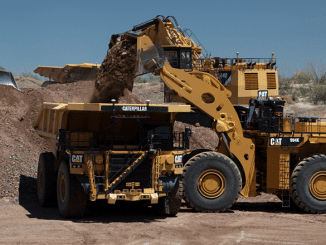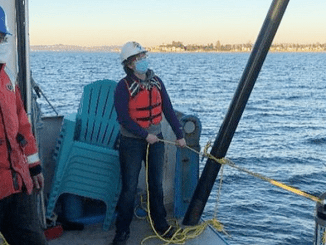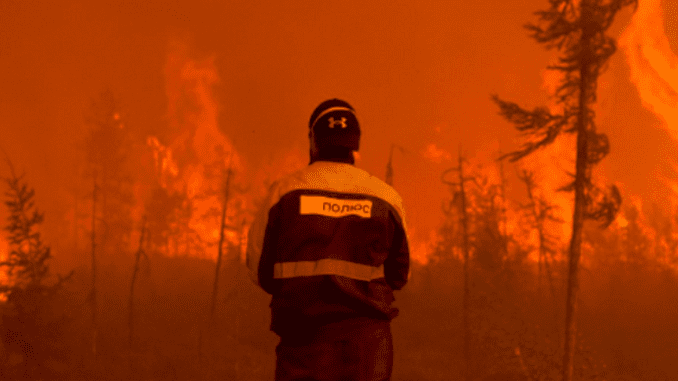
By Benjamin Seidman
KRASNOYARSK, Russia, May 20, 2022 (ENS) – Early season wildfires in Siberia this spring threaten yet another record-breaking fire season in Russia, while the Russian government continues to pour resources into its ongoing war in Ukraine.
The more than 4,000 fires in Russia this calendar year have already burned 270,000 hectares or 1,000 square miles, an area roughly as large as the U.S. state of Rhode Island. Still, it’s a small area compared to the extent of Siberia, which constitutes all of North Asia, from the Ural Mountains in the west to the Pacific Ocean in the east.
In response to the spreading inferno, Russian President Vladimir Putin declared during a televised state meeting two weeks ago, “We cannot allow a repeat of last year’s situation, when forest fires were the most long-lasting and intensive of recent years.”
Siberia has always had a wildfire season but the past two years have been intense. In some parts of Siberia, June 2021 was the hottest and driest since 1888.
Last year’s fire season caused immense environmental and property damage and proved to be the worst on record. The 2021 fires ultimately scorched 18.8 million hectares (7,258 square miles), an area the size of Greece, according to Greenpeace Russia, a nonprofit NGO.
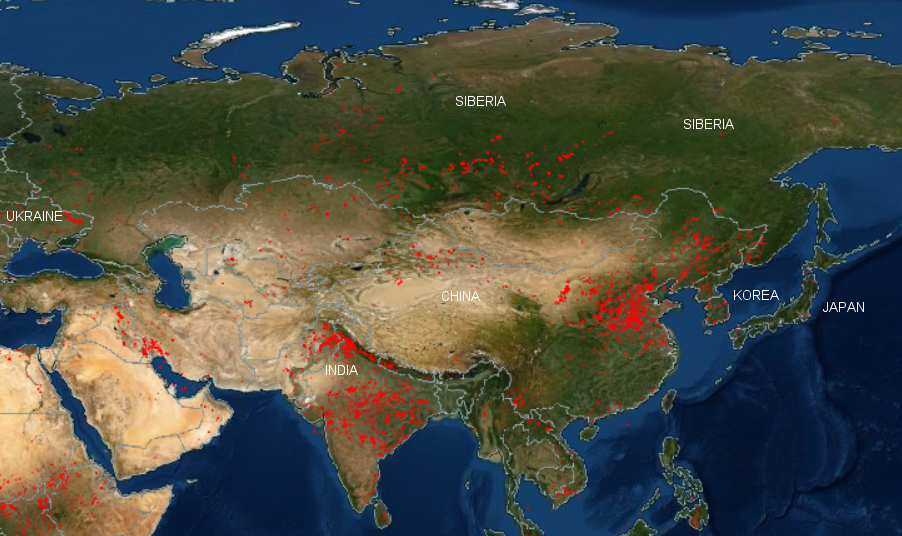
Despite Putin’s strong words to regional authorities and orders to them to deal more effectively with Siberian forest fires, this fire season presents a bleak outlook.
As Alexei Yaroshenko, forest expert with Greenpeace Russia, told Reuters, “Nothing has changed since last year. For now, we are likely to see another major fire season.”
The 2022 fire season could prove even more devastating than last year’s recordbreaker, as Russian resources and military forces are occupied with the unfolding war Russia is waging in Ukraine.
In recent years, Russia has been forced to call upon military personnel and resources such as helicopters to aid in firefighting efforts, a crutch that will no longer be available to Russia, which has prioritized the fire-fight with Ukraine.
From Warming to Wildfires to Faster Warming
The Siberian fires have intensified due to global warming. These devastating fires, once isolated catastrophes, are now annual facts of life in Siberia. As fires tear through the peatlands and Siberian taiga, a coniferous band of forest, they unleash the greenhouse gases methane and carbon that have been stored in the permafrost for thousands of years.
As these peatlands and forests burn, the carbon stored in the peat and the trees is released. These greenhouse gases will further contribute to global warming, and in an unfortunate positive feedback loop, likely to result in more intense wildfires in the coming years.
Siberian wildfires offer an example of war directly contributing to global warming as Russia finds itself less able to defend Russian lands from the dangerous fires which will accelerate global warming.
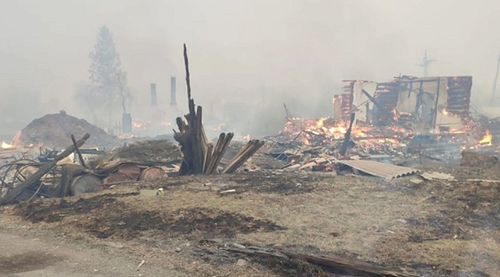
The wildfire season is only beginning, yet the fires this year have already caused property damage, environmental degradation, and loss of life.
Eight people perished in and around the Siberian city of Krasnoyarsk, Russia on May 7 as a fire swept through populated areas. The Krasnoyarsk region has declared a state of emergency.
“Extinguishing is being complicated by meteorological conditions – violent winds are fanning the flames and preventing them from being put out,” the Krasnoyarsk regional ministry for emergencies said on Telegram.
Krasnoyarsk Regional Governor Alexandre Uss said high winds of up to 40 metres per second, 131 feet per second, had brought down trees and power lines across the region, sparking the fires. Authorities said approximately 300 firefighters backed by 90 vehicles are fighting them.
The smoke from last year’s Siberian fires drifted around the world, even reaching the North Pole, which the U.S. National Aeronautics and Space Administration, NASA, claimed was the first time such an occurrence was witnessed.
In 2021, an expansive layer of smoke blanketed much of Eurasia with “most of Russia covered” on August 6 according to NASA. This smoke has negative health effects and could worsen underlying lung and breathing issues resulting from Covid-19.
Now, Russia faces a massive dilemma in deciding the amount of resources to devote to protecting invaluable ecosystems and how much to allocate for the war in Ukraine.
But whatever the budget, unless fortunate weather patterns occur, it appears that Russia’s Siberian region is likely to face yet another catastrophic wildfire season.
Featured image: The Siberian fires burned 21 million acres, about the size of the country of Serbia, in Russia’s coldest region in 2021. (Photo courtesy NASA)
© 2022, Environment News Service. All rights reserved. Content may be quoted only with proper attribution and a direct link to the original article. Full reproduction is prohibited.


